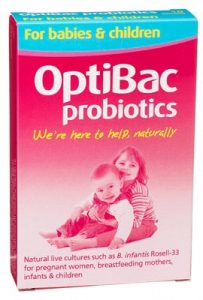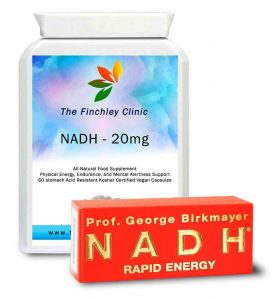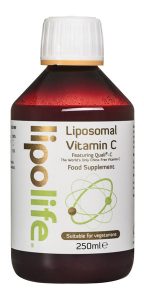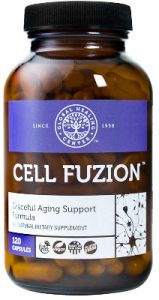Antioxidants for Viral protection
OK, so I am not saying Vitamin D, which I am coming onto in a moment is the be all and end all. So first a quick reminder, as discussed in previous newsletters that Vitamin C, zinc, and selenium are all vital for robust immunity and preventing viral replication. Its great for all three of them to be taken in an all in one solution such as Antioxidant Supreme (finally back in stock, after we were completely wiped out at the beginning of the current crisis). In almost all cases, I would suggest dosing on the upper limit suggested on the label, not just for preventing a virus, but for robust health overall. I regret that people are to some degree taking Antioxidant Supreme etc for the wrong reasons. It should be taken for optimal health, and all the time, and not just to prevent a virus! That’s almost a trivial usage bearing in mind the vital importance of basic antioxidants to almost every important marker of health and longevity. Many other nutrients and herbs are being shown to be useful but that’s a subject for another day, and something I have covered quite a lot in previous newsletters.
Vitamin D and Covid-19 – Even the orthodox “authorities” and mainstream media are waking up (a bit).
If I were to pick one nutrient that is more essential than almost anything else, it has to be Vitamin D, and even mainstream medicine is catching up now with what I have been saying from day one of the current crisis. The evidence that’s emerging now for Vitamin D in relation to COVID-19 is getting stronger and stronger. Even the mainstream press is catching on to this, even on most aspects of the current pandemic they just follow the mainstream narrative 99% of the time, which I totally disagree with. Here in the UK, the ONLY newspaper that covered the ending of the research on Hydroxychloroquine and its benefits with COVID-19 before it had really even begun was The Guardian. They are the only ones who could be bothered to raise an eyebrow when what happened in effect, was I am bittely disappointed to say, obvious medical fraud designed to protect vested interests. This story / international disgrace, has been covered properly here. The other newspapers are at best asleep at the wheel, or more likely avoiding the subject in ordre to protect their advertising revenues being threatened by the vested interests that could be upet.
Anyway, back to Vitamin D – The Life Saving Immune Supporter – Strengthening Our Bodies Against ALL Viral Illness.
 Here I want to acknowledge the wonderful Vlogger Ivor Cummins and refer people to his YouTube video found here. This video discusses the study, which I am sure you won’t be seeing on BBC News showing that those who’s Vitamin D level was below 10ng/ml were 10.1 x more likely to die from the virus than those who’s blood level was about 30ng/ml. (note: ng/ml – nanograms per millimeter of blood)
Here I want to acknowledge the wonderful Vlogger Ivor Cummins and refer people to his YouTube video found here. This video discusses the study, which I am sure you won’t be seeing on BBC News showing that those who’s Vitamin D level was below 10ng/ml were 10.1 x more likely to die from the virus than those who’s blood level was about 30ng/ml. (note: ng/ml – nanograms per millimeter of blood)
What’s interesting is that even this study misses an important point. The optimal level is not 30ng/ml. I regard that as the minimum acceptable level. The optimal level is about 60ng/ml. How do we know this? It’s pretty easy really. Basically when we manage to get as much of our bodies as possible in the sun regularly (without burning), and when the sun is at an angle of above a minimum of 30 degrees to the earth (in the UK we have this for 8 months of the year, but only for a brief period of the day during the transition months of October and March) weakest sun months of that time), and 40 degrees for dark skinned people, we get up to 60-80ng within a couple of weeks. It never goes above that no matter how much time we spend in the sun. And that’s the optimal level. Had the study been based on the optimal amount, not the minimum amount, one can only assume it would not be a 10.1 x higher risk for death. The difference would be far more impressive! You can see the risk of death from Coronavirus in visual terms to the left (this is a screen shot from the highly recommended aforementioned YouTube video) plotting the risk of death against vitamin D status. You don’t need to be a Professor of statistics to understand it.
Vitamin D Supplements
In my opinion if you can’t get in the sun, then you should supplement with Vitamin D, every day that you don’t get in the sun for some non-burning tanning time without splashing on toxic sunscreens that block UBV. Of the different Vitamin D products we provide, my favourite one, and indeed the one I take, is this one. High strength 5000iu, not the PATHETIC dosage recommended by the mainstream, which is almost useless. And it comes with the added advantage of containing Vitamin K2, which ideally should always be combined with Vitamin D. That’s the subject of another newsletter as the K2 has a lot of benefits of its own. Recommended usage: One a day every day except on days when your body has had or is going to get enough sun.
Who is at the highest risk of all for Vitamin D deficiency?
The truth is that most people have below optimal levels of vitamin D. But some people are even more likely than average to need a vitamin D supplement. The following list is not exhaustive, but covers the most common group of people who are especially likely to need a vitamin D supplement.
- Breastfed infants, because human milk is a poor source of vitamin D, largely because the mothers themselves have poor vitamin D levels
- The elderly, as their skin doesn’t make vitamin D when exposed to sunlight as efficiently as young people, and their kidneys are less able to convert vitamin D to its active form. (Is this one of the reasons why the elderly are at higher risk of dying from coronavirus?)
- Dark skinned people as it takes them much longer to produce vitamin D from action of of ultraviolet light on the skin. (Is this one of the reasons why black and Asian people are at higher risk of dying from coronavirus?). In my opinion dark skinned people living in the UK should take vitamin D throughout the year, including during periods of fine sunny weather.
- People with disorders such as Crohn’s disease or celiac disease who don’t handle fat properly, because vitamin D needs fat to be absorbed.
- Obesity, because the body fat binds to some vitamin D and prevents it from getting into the blood. (Is this one of the reasons why obese people at higher risk of dying from coronavirus?)
- People who have had gastric bypass surgery
- People with osteoporosis, hyperparathyroidism (too much of a hormone that controls the body’s calcium level), sarcoidosis, tuberculosis, histoplasmosis, or other granulomatous disease (disease with granulomas, collections of cells caused by chronic inflammation),
- People with cancer
- People who take medicines that affect vitamin D metabolism.
Our full range of Vitamin D products is found here.
Finally: Have we shut country the country for nothing?
According to today’s Washington Examiner has yes. Every country has voluntary ruined their economies for no meaningful health benefit at all. Have a look at this article and make up your own mind – https://www.washingtonexaminer.com/opinion/if-asymptomatic-carriers-dont-spead-coronavirus-we-just-shut-down-the-country-for-nothing
 Be well!
Be well!
Mark G. Lester
Director – The Finchley Clinic Ltd
www.thefinchleyclinic.com





